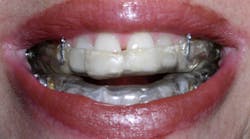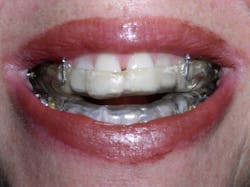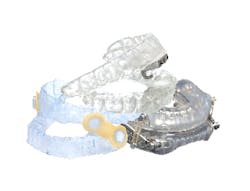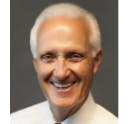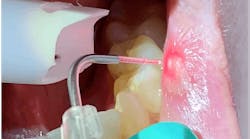Bridging the treatment gap: Dentist-physician teamwork essential to dental sleep medicine
Qualified dentists are uniquely positioned to work as part of an interdisciplinary team with sleep physicians in two primary ways to help close the obstructive sleep apnea treatment gap.
This article first appeared in the newsletter, DE's Breakthrough Clinical with Stacey Simmons, DDS. Subscribe here.
As a dental sleep medicine practitioner, my collaboration with sleep physicians allows me to provide the highest quality of care for patients who may not otherwise treat their obstructive sleep apnea (OSA). It is estimated that approximately 25 million Americans suffer from OSA, and up to half of treated patients don’t adhere to continuous positive airway pressure (CPAP) therapy—leaving a significant treatment gap. Qualified dentists are uniquely positioned to work alongside sleep physicians to help close this gap.
Teamwork between dentists and sleep physicians when offering oral appliance therapy is essential, because OSA is a medical disorder. As dentists, the moment we broach the subject of sleep apnea with our patients, we are entering a medical environment filled with diagnosis requirements, medical insurance billing, potential medical liabilities, and more. Dental sleep medicine is an exciting field to work in and a vital service that dentists can provide, but it needs to be coordinated in tandem with a medical counterpart to be truly impactful. Additionally, the dentist must be prepared through education to use the proper protocols in order to be a valued part of a medical team.
READ MORE ABOUT OSA |Obstructive sleep apnea: An opportunity for the dental profession
The interdisciplinary approach for oral appliance therapy is supported by research and has been reaffirmed by successful patient outcomes for years. In this model, the physician is principally in charge of the patient’s medical evaluation, diagnosis, and long-term management, while the dentist plays a necessary and collaborative part of the treatment team.
There are two primary roles a dentist can play in helping address the growing epidemic of untreated sleep apnea in our society, each requiring a different level of education, skill, and involvement:
1. Identify at-risk patients: Dentists can and should be on the front line to identify patients with potential sleep apnea and sleep-disordered breathing. Because we see patients routinely, dentists are well-positioned to pinpoint those who are at risk for OSA and refer them to a knowledgeable sleep physician for a consultation and possible diagnosis.
2. Treat with oral appliance therapy:Once a patient has been diagnosed by a board-certified physician, dentists who are knowledgeable in dental sleep medicine can then treat the patient with oral appliance therapy. Continued communication and teamwork between sleep physicians and dentists during follow-up visits are imperative to confirm efficacy and increase treatment success.
Without collaborative relationships with physicians, dentists’ efforts to provide an acceptable standard of care are compromised. For example, to fit an oral appliance without a proper medical evaluation gives patients a false sense of diagnosis, deterring them from pursuing a comprehensive exam with a licensed physician. This seemingly innocuous action has the potential to increase patients’ vulnerability to the adverse health effects and comorbidities of OSA.
Partnerships between qualified dentists and physicians are not only key for optimal patient care; they also increase the breadth of a dentist’s dental sleep medicine practice. Many dentists—myself included—have been so successful with providing oral appliance therapy that it is now the sole service of their practice, allowing their business to grow and reach exponentially more sleep apnea patients in need of treatment.
Sleep physicians want to work with dentists who are educated about OSA and who understand the value of teamwork. I often hear complaints from physicians that they cannot find a local dentist who is qualified in the comprehensive treatment of OSA. To be an outstanding dental sleep medicine practitioner, you must network and ensure that your skills are known within the medical community. Ultimately—for the best medical interests of patients—the dental sleep medicine model relies on a collaborative, referral-based relationship between a sleep physician and a dentist.
This article first appeared in the newsletter, DE's Breakthrough Clinical with Stacey Simmons, DDS. Subscribe here.
Harold A. Smith, DDS, FACD, D.ABDSM, a graduate of the Indiana University School of Dentistry, is president of the American Academy of Dental Sleep Medicine (AADSM). He has provided oral appliance therapy since 1993 and is currently the clinical director of Dental Sleep Medicine of Indiana. He also serves as dental consultant to the major Indianapolis hospital sleep disorder centers and is on faculty at Indiana University School of Medicine’s fellowship program in sleep medicine. An American Board of Dental Sleep Medicine (ABDSM) diplomate, Dr. Smith has lectured nationally on the dentist’s role as part of a medical team in sleep medicine. He is a fellow of the American College of Dentists and an active member of the American Academy of Sleep Medicine, American Dental Association, Indiana Dental Association, Indianapolis District Dental Society, and Academy of General Dentistry. He also served as president of the AADSM from 2002–2004, received the AADSM Distinguished Service Award in 2006, and acted as president of the ABDSM from 2008–2010.
